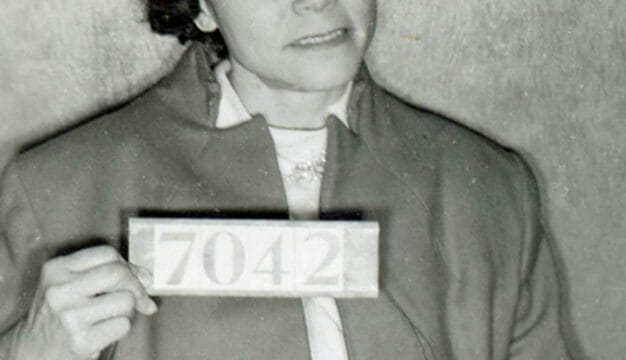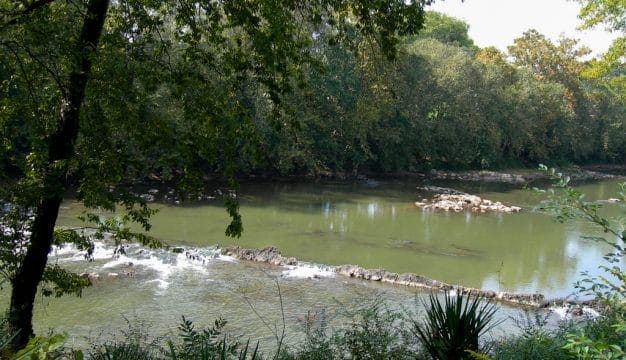Rickwood Caverns State Park
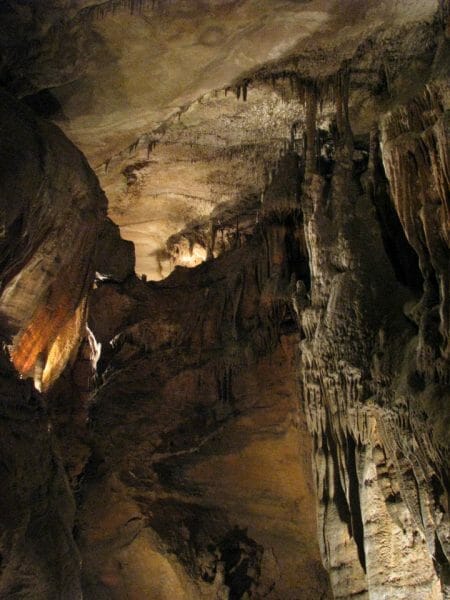 Rickwood Caverns
Rickwood Caverns State Park is located in Blount County near the town of Warrior. Its main attraction is a massive network of underground caverns that features intriguing geological formations, underground pools, and rare blind cave fish. The caves were “discovered” in the early 1950s by a troop of Boy Scouts and their leader, Eddie Rickles. The caves were apparently known by area residents (there is graffiti dated in the 1890s on one wall of the caves), but it was Rickles who decided to develop the property as an attraction to the public. He created a partnership with friend Sonny Arwood, and they combined their names to christen Rickwood Caverns. Cave tours operated privately from 1954 to 1974, when the park was sold to the state of Alabama. Rickwood Caverns opened as a state park in June 1974.
Rickwood Caverns
Rickwood Caverns State Park is located in Blount County near the town of Warrior. Its main attraction is a massive network of underground caverns that features intriguing geological formations, underground pools, and rare blind cave fish. The caves were “discovered” in the early 1950s by a troop of Boy Scouts and their leader, Eddie Rickles. The caves were apparently known by area residents (there is graffiti dated in the 1890s on one wall of the caves), but it was Rickles who decided to develop the property as an attraction to the public. He created a partnership with friend Sonny Arwood, and they combined their names to christen Rickwood Caverns. Cave tours operated privately from 1954 to 1974, when the park was sold to the state of Alabama. Rickwood Caverns opened as a state park in June 1974.
The main passageway, called the Miracle Mile, runs through 260-million-year-old Mississippian Period limestone formations. Guided tours take visitors past fossilized mollusk shells and other marine animals embedded in the cave’s limestone walls and ceilings, the remains of the floor of an ancient ocean that existed there during much of North America’s prehistoric past. Rickwood Caverns is called a “living cave” by geologists, so called because mineral-laden waters still seep through the cave and continue to form stalactites and stalagmites and flowstone formations. The cave remains at a constant 62∘F.
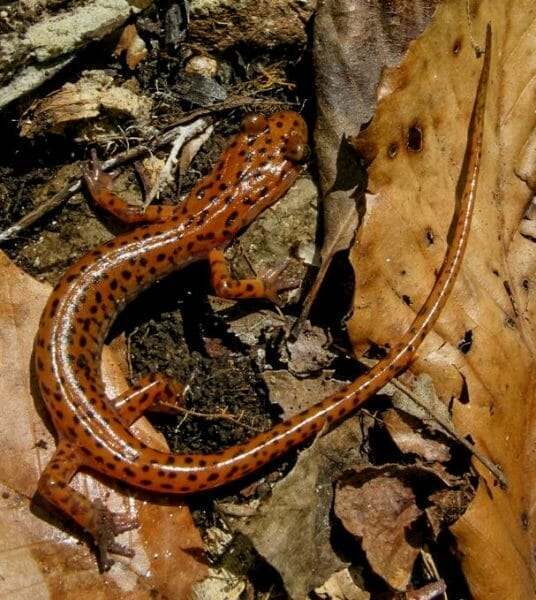 Cave Salamander
Access to the cave is available only with a tour guide. Tours are given at periodic times throughout the day and start from the gift shop. The tour is one mile long and takes about one hour; it winds through narrow passages and up and down stairways through lighted chambers that illuminate the cave’s colorful formations. The tour goes through the entire cavern except for a few passageways and a defunct civil defense fallout shelter. There is believed to be a connection to other caves through the underground lake at the deepest part of the caverns. Divers explored it prior to 1974 and found that the lake extends at least 25 feet back and 65 feet down. The divers were not prepared to go further and turned back at that point. Some Native American artifacts found in the cave are on exhibit in the gift shop.
Cave Salamander
Access to the cave is available only with a tour guide. Tours are given at periodic times throughout the day and start from the gift shop. The tour is one mile long and takes about one hour; it winds through narrow passages and up and down stairways through lighted chambers that illuminate the cave’s colorful formations. The tour goes through the entire cavern except for a few passageways and a defunct civil defense fallout shelter. There is believed to be a connection to other caves through the underground lake at the deepest part of the caverns. Divers explored it prior to 1974 and found that the lake extends at least 25 feet back and 65 feet down. The divers were not prepared to go further and turned back at that point. Some Native American artifacts found in the cave are on exhibit in the gift shop.
Visitors enter through a stone building and then descend over the next mile to a depth of 175 feet. Highlights of the tour are an underwater lake, odd animal-shaped limestone formations, and a fragile strip of rock thin enough to see through. Two of the largest and most dramatic formations, the Frozen Castle and the Bridal Column, both feature huge floor-to-ceiling columns surrounded by arrays of stalactites. Lucky visitors may glimpse blind cave fish and cave crayfish in the subterranean lake as well as view the small resident population of bats that clings to the walls and ceilings near the end of the tour route. The caverns also are home to frogs, salamanders, and transparent fish unique to these underground environments.
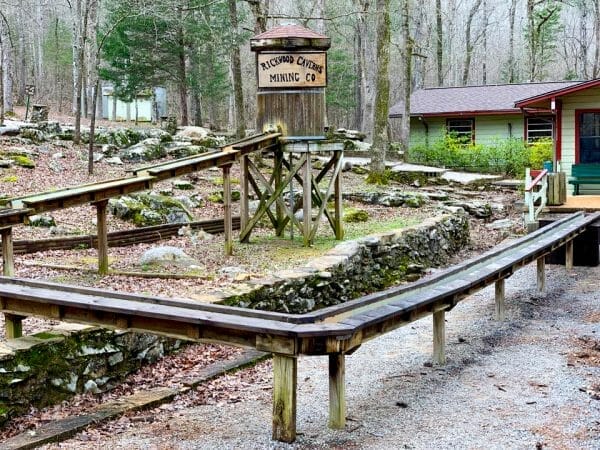 Mining Play Area at Rickwood Caverns
In addition to the caverns, the park features an Olympic-size swimming pool fed by spring water from within the cave, a picnic area with tables and grills, two large pavilions, a playground, a miniature train for children to ride, a snack bar, and a gift shop. The modern campground has 9 campsites with electricity and water for recreational vehicles and four primitive campsites for tents, as well as restrooms, showers, and a dump station. Hiking trails wind through the park’s heavily forested 380 acres. Fossil Mountain Trail is an easy 1.2-mile loop trail through an area of rocks and boulders with limestone and dolomite boulders ranging in size from that of a bowling ball all the way up to a house. Ancient leaf and seashell imprints are visible on some of the rocks along the trail but no collecting is permitted. Hardwoods and pine trees crowd the park’s hills, and the trails offer chances to spot the park’s resident songbirds, deer, squirrels, and other small animals.
Mining Play Area at Rickwood Caverns
In addition to the caverns, the park features an Olympic-size swimming pool fed by spring water from within the cave, a picnic area with tables and grills, two large pavilions, a playground, a miniature train for children to ride, a snack bar, and a gift shop. The modern campground has 9 campsites with electricity and water for recreational vehicles and four primitive campsites for tents, as well as restrooms, showers, and a dump station. Hiking trails wind through the park’s heavily forested 380 acres. Fossil Mountain Trail is an easy 1.2-mile loop trail through an area of rocks and boulders with limestone and dolomite boulders ranging in size from that of a bowling ball all the way up to a house. Ancient leaf and seashell imprints are visible on some of the rocks along the trail but no collecting is permitted. Hardwoods and pine trees crowd the park’s hills, and the trails offer chances to spot the park’s resident songbirds, deer, squirrels, and other small animals.
